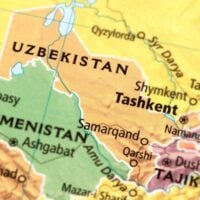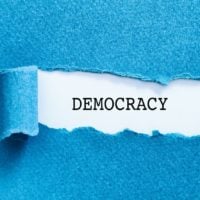Deadline: 22-Jun-23
The United States Agency for International Development (USAID) is seeking applications for a Cooperative Agreement from qualified entities to implement the Ana ndi Achinyamata Patsogolo (Children and Youth First) Project.
Project Goals and Objectives
- This ANAPA Project will contribute to the achievement of the 95-95-95 goals and reaching and sustaining epidemic control in Malawi by helping to reduce lifetime risk of HIV acquisition and achieve durable viral suppression among children, adolescents, and their families. ANAPA’s goal is to improve the health, well-being, and protection of children and adolescents (and their families) living with, affected by, and vulnerable to HIV through high-impact service delivery and district-level social service system strengthening to sustain an effective response for children, adolescents, and their families through locally led solutions.
- The project aims to standardize a robust model of care that can be replicated and scaled up by GOM. In addition, cornerstones of the Activity will be advancing human rights and equity for children and AGYW, youth engagement and participation, as well as maximizing community engagement to strengthen program responsiveness to clients’ priorities and improve service quality, acceptability, and impact.
- This project will include a combination of high-impact service delivery for Comprehensive, Preventive, and DREAMS family strengthening activities targeting children, adolescents, their families and young women in the HIV epidemic; non-profit organization local partner capacity strengthening; and national and districtlevel social service system strengthening for long-term sustainability. PEPFAR/Malawi has identified a number of priority populations based on epidemiological and contextual considerations. The target population for ANAPA are children, adolescents (their families) and young women infected or affected by HIV. CAFYW and communities are a focus for building resilience and providing a safe and secure foundation for positive education and health outcomes. The relationship between families and their children has been shown to be a critical factor in lowering risk – including sexual behavior – and improving the children’s lives.
- ANAPA project’s specific objectives are:
- Increase access to and utilization of comprehensive, preventive, and DREAMS family strengthening services among children and adolescents 0-19 years and their families through implementation of evidence-based interventions.
- Improve non-profit organization Local Partners’ capacity for implementation of evidence-based interventions and program monitoring, evaluation, and reporting (MER).
- Strengthen GOM National and district-level social service capacity to sustain an effective response for children, adolescents, and their families in high HIV burden districts.
Aim and Development Hypothesis
- The aim of this project is to Prevent new HIV infections and improve the health, well-being, and protection of children, adolescents (their families) and young women living with, affected by, and vulnerable to HIV in the selected districts. This ANAPA project will address critical barriers to HIV service access, uptake, and adherence and scale up high-impact HIV prevention services, improving health and social well-being outcomes among Children, Adolescents (their families) and young women (CAFYW).
- If children and adolescents living with HIV and their families receive socioeconomic support to adhere to HIV treatment; and if adolescents and young women are given skills to protect themselves from sexual predation; and if older adolescents have the social assets and life skills to practice HIV prevention options including biomedical prevention, within a supportive community environment, then Malawi will be in a position to achieve and sustain equitable HIV outcomes.
Funding Information
- Direct Activity Cost – TOTAL $60,000,000.00
- Crisis Modifier – up to and within the total $600,000.00
- Start Date and Period of Performance for Federal Awards – The anticipated period of performance is five years. The start date will be dependent upon the timeline in which negotiations and necessary responsibility determinations will be completed.
Results
- Result 1: Increased access to and utilization of comprehensive, preventive, and family strengthening services among children, adolescents (their families) and young women.
- IR 1.1: Increased use of comprehensive services and support among children and adolescents living with, affected by, and vulnerable to HIV 0-19 years and their families.
- IR 1.2: Increased access to prevention of HIV and sexual violence interventions among children and adolescents 10-14 years.
- IR 1.3: Increase access to DREAMS, family strengthening/parenting support interventions among AGYW 10-24 years and their caregivers.
- Result 2: Improve Local capacity for implementation of evidence-based interventions and program monitoring, evaluation, and reporting (MER) at National and District Level.
- IR 2.1: Increased Local capacity for implementation of evidence-based, structured interventions.
- IR 2.2: Increased Local capacity for program monitoring, evaluation, reporting (MER) and data management.
- Result 3: Strengthened national and, district capacity to sustain an effective response for children, adolescents, and their families in high HIV burden districts.
- IR.3.1: Expanded use of GoM policies and guidelines at national and, district level.
- IR.3.2: Strengthened program standards to ensure high quality service delivery and sustainable outcomes for children, adolescents and their families’ care and support.
- IR.3.3: Strengthened community-based social service workforce at National and district levels.
Population Focus
This ANAPA project will target the following subpopulations:
- Children and adolescents (0-19 years) living with HIV (prioritizing C/ALHIV who are newly diagnosed, new on treatment, experiencing treatment interruption, and not virally suppressed)
- HIV-exposed infants (HEI) and HIV-exposed and uninfected (HEU) children (0 to 24 months)
- Children and adolescents (0-19 years) whose parent or primary caregiver is living with HIV (especially those whose mothers are not on ART, experiencing treatment interruption, and not virally suppressed)
- Adolescent mothers (under age 20 years) and their young children
- Children of Female Sex Workers (FSW) (0 to 19 years)
- Survivors of violence (especially sexual violence) (0 to 24 years)
- At-risk adolescent girls and young women aged 10 to 24
- Children and adolescents orphaned due to HIV (under 20 years)
- Children and adolescents co-affected by HIV and TB, COVID-19, and/or disability.
Geographic Focus
- The ANAPA project will be implemented in nine PEPFAR High HIV burden districts of Chikwawa, Zomba, Blantyre, Machinga, Phalombe, Thyolo, Mulanje, Mangochi and Lilongwe.
Eligibility Criteria
- Eligibility for this NOFO is restricted to local (Malawian) and Regional (Southern African Development Community – SADC) organizations. Applications from organizations that have not previously received financial assistance from USAID are welcome if the Applicant determines that it has necessary capacity to implement projects of the magnitude such as this one.
- Applicants MUST meet the following criteria that qualifies what a local or regional organization as defined by the President’s Emergency Plan for AIDS Relief (PEPFAR).
- USAID/PEPFAR defines a “local or regional entity” as an individual, a sole Proprietorship, or an entity that:
- Is incorporated or legally organized under the laws of the country or region and have its principal place of business in the country or region served by the PEPFAR program with which the entity is or may become involved.
- It is 75% beneficially owned by at the time of the application by individuals who are citizens or lawfully admitted permanent residents of that same country or region.
- At least 75% of the entity’s staff (senior, mid-level, support) at the time of the application must be citizens or lawfully admitted permanent residents of that same country or region and
- Where an entity has a Board of Directors, at least 51% of the members of the Board must also be citizens or lawfully admitted permanent residents of the country or region.
- Faith-based organizations are eligible to apply for federal financial assistance on the same basis as any other organization and are subject to the protections and requirements of Federal law.
For more information, visit Grants.gov.









































